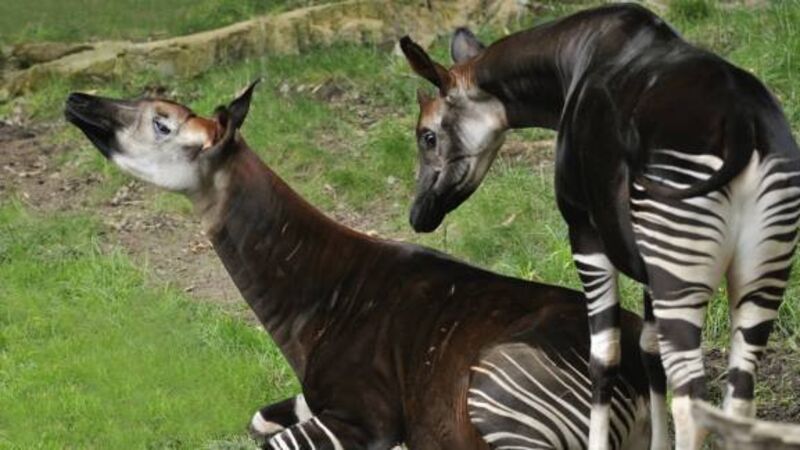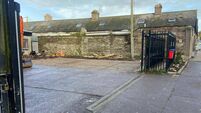An okapi in Dublin, I presume

He renamed it Victoria Falls. Some years later, while searching for the source of the Nile, he disappeared. His fate became the subject of much speculation and the New York Herald sent Henry Morton Stanley, an adventurer, to Africa to find him. By the shores of Lake Tanganyika on Nov 10, 1871, Stanley came upon the lost explorer and uttered the famous line; ‘Dr Livingstone, I presume’.
In the journal of his adventures, Stanley mentions a strange kind of ‘donkey’, living in the forest. It was thought unlikely at the time, that a large animal could have gone unnoticed by western explorers and zoologists doubted its existence. Then Harry Johnston, British governor of Uganda, was shown strange hoof-marks which local people claimed were made by a mysterious creature called the ‘okapi’. Johnston went on to discover bits of striped skin and bones, including a skull. Although he never saw a live one, he was able to work out what the animal looked like and prepare a scientific description of it.
In 1901, the species was recognised and named Okapia johnstonia in his honour. Now, two of Stanley’s ‘donkeys’ have taken up residence at Dublin Zoo, their arrival being the outstanding Irish zoo event of 2013. The okapi is a large even-toed hoofed creature with a reddish-brown coat. Its black and white striped haunches may give the impression it’s a kind of zebra but zebras are odd-toed. The stripes provide camouflage and may help babies follow their mothers in the jungle darkness. A long neck and two small skin-covered ‘horns’ suggest a close relationship to the giraffe. Like that savannah-dwelling cousin, this vegetarian’s height gives access to leaves in trees. It also has a powerful tongue, a virtual limb long enough to reach and clean its ears. Gleaming white lower legs give the impression the animal is wearing ankle-socks. Huge ears can detect the slightest sound while large eyes facilitate night vision. Its main enemy being the leopard, a stealth hunter and ambush predator, acute senses are essential to an okapi’s survival.
Males are territorial, leading solitary lives. Individuals, apart from mothers with calves, associate only when mating, so two separate state-of-the-art facilities were created for the new arrivals, both male, in a semi-forested area of the Zoo.
Given its shy and secretive habits, it’s no surprise the okapi was the last large animal to be discovered by science in Africa. It is found only in a mountainous tree-covered region of the Congo. Numbers have fallen since Stanley’s day, poaching and habitat lost to an encroaching human population, being mainly to blame. Classified by the International Union for the Conservation of Nature as ‘near threatened’, there are thought to be 10,000 to 30,000 animals left.
The Okapi Conservation Project, which was founded in 1987, helped create the Okapi Wildlife Reserve in the Ituri forest in the Democratic Republic of Conge. It’s now a United Nations World Heritage site.
The region is politically unstable and volatile; a vicious and protracted civil war has killed at least five million people. Last year, the reserve was invaded by elephant poachers who slaughtered six people including several members of staff.
Fourteen okapis, kept at the centre, were also killed. With such insecurity in the wild, maintaining a healthy and genetically diverse population in zoos is increasingly important.
A calf delivered at Antwerp Zoo in 1953 was the first okapi to be born outside the Congo.
The Dublin animals travelled by road and ship from Rotterdam Zoo, accompanied by Rob van Loon, an expert okapi keeper who stayed on for a fortnight helping the animals adapt to their new home and sharing his knowledge with their new minders. Both okapis have settled in well.
In due course, as keepers here become more expert in caring for them, female okapis will be brought to Dublin. Hopefully, Ireland will soon take part in the international okapi zoo breeding programme.













